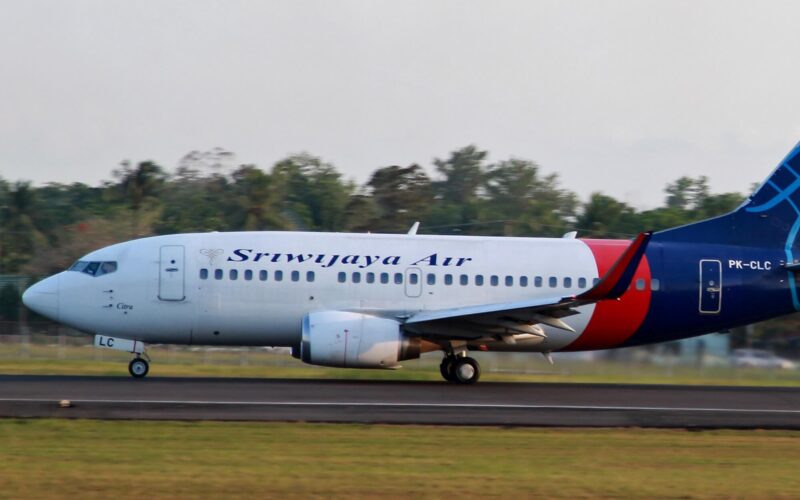Indonesia’s air accident investigator, KNKT, has issued its final report on the Sriwijaya Air Boeing 737 crash which killed 62 people in January 2021. Investigators found the fatal incident was due to a faulty automatic throttle system that was not properly monitored by pilots.
The Boeing 737-500 aircraft, registered PK-CLC, performed its last flight on January 9, 2022. The plane was scheduled to fly 62 passengers onboard, including two pilots, four flight attendants, 50 passengers, and six crew members traveling as passengers, from Soekarno-Hatta International Airport (CGK) in Jakarta to Supadio International Airport (PNK) in Pontianak.
However, when the jet was flying over the Java Sea near Laki Island it suddenly lost altitude and plunged 10,000 feet in less than a minute.
The flight crew did not declare an emergency and did not report any technical problems before the Boeing 737 disappeared from radars.
What caused the plane to crash?
According to the KNKT’s final report, the crash was caused by a faulty automatic engine throttle system, which had not been properly monitored by the flight crew.
While pilots can control the thrust levers manually and a plane can be cleared for a flight without a normally working autothrottle, during the SJ182 flight the pilots did not closely monitor the asymmetrical thrust condition, investigators found.
“The investigation concluded that during the accident flight, the pilots should have enough time to monitor the thrust lever asymmetry and be able to recognize deviation of the flight path. However, the pilots did not identify the flight anomaly before it developed into an upset condition,” the report noted.
Investigators also found that the left engine throttle lever moved back to as low as 34% speed after takeoff. Meanwhile, the right lever remained in its original climb position at about 92% speed, meaning that the left engine thrust significantly decreased.
“This lapse of not identifying the anomaly could be due to reduced active monitoring because of pilot automation complacency and confirmation bias that the aircraft was performing the right turn as commanded. Without using the EADI [Electronic Attitude Direction Indicator, ed.-] as a primary reference in assessing the aircraft attitude, the pilot was not able to apply correct recovery inputs,” the KNKT explained.
Problems with the autothrottle system were reported 65 times in the jet log
During the flight, the Boeing 737 autothrottle (A/T) system, which automatically controls engine power, was unable to move the right thrust lever due to the failure of the mechanical system, the report said.
The increase of the thrust asymmetry could have been stopped if the aircraft Cruise Thrust Split Monitor (CTSM) system was working properly. However, the investigators determined that “an error in the spoiler signal value” led to the CTSM fault.
Consequently, the thrust asymmetry became greater, and the plane aircraft turned to the left instead of to the right as intended. The plane suffered a so-called upset condition, during which its flight altitude and airspeed went outside the normal bounds of operation for which it is designed.
At an altitude of around 10,700 feet, the autopilot disengaged completely, making the aircraft roll to the left more than 45 degrees.
“The aircraft entered an upset condition, and the pilot was unable to recover from the situation,” the report explained.
The loss of control caused the Boeing 737 to dive into the sea.
The KNKT found that technical issues within the maintenance logs of the 26-year-old PK-CLC had been reported 65 times since 2013.

